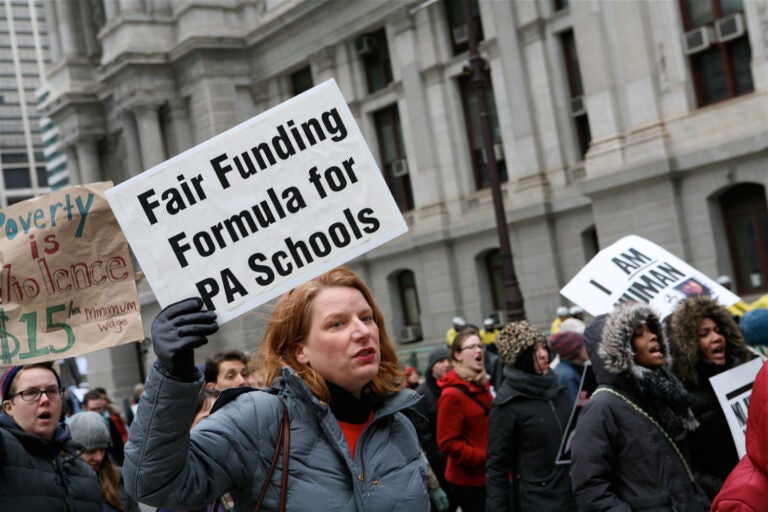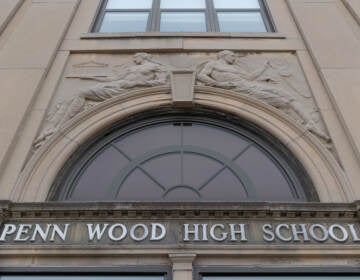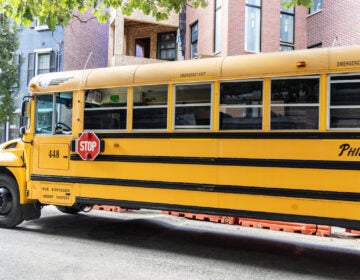POWER: Pa. state education funding is a textbook example of structural racism
Member of interfaith grassroots organization expresses support for Student Union calls on redirecting resources from security to support.

(Harvey Finkle/The Notebook)
This story originally appeared on The Notebook.
The Philadelphia Student Union (PSU), a youth organizing group, recently circulated a petition to demand the removal of all police from Philadelphia schools. In less than 24 hours, the petition garnered close to 2,500 signatures and is now approaching the 13,000-signature mark.
Like many movements to end state violence against Black people, calls to defund the police are not just about what we don’t want; it’s also about building the kind of world we want to live in. Patrisse Cullors, co-founder of the Black Lives Matter movement has said: “It’s not just about taking away money from the police, it’s about reinvesting those dollars into Black communities.”
The School District of Philadelphia (SDP) spends $31 million on its security force — money that PSU wants to put toward training community members in “de-escalation, restorative justice, and other skills that support healthy schools and communities.”
At a time when SDP’s budget has been decimated by the coronavirus pandemic with an expected a shortfall of at least $800 million over the next five years, PSU’s youth-led campaign offers an important model for investing in the kind of high-quality education Philadelphia students need and deserve.
But to ensure a serious and sustained investment in Philadelphia schools, we must also pressure state legislators to restructure the way school districts are funded in Pennsylvania. Doing so would give Philadelphia students $400 million more every year.
In 2016, the state legislature adopted a fair funding formula that distributes more money to students and districts with greater needs. However, state legislators decided that only new money — increases to the state basic education funding line item — would be routed through the formula. In effect, only 10% of the state education budget is distributed through the fair funding formula.
POWER, an interfaith grassroots organization that I am a member of, has highlighted how Pennsylvania state education funding is a textbook example of structural racism: the whiter the school district, the more state funding it receives relative to its fair share; the more Black and Brown students in a school district, the less state funding it receives relative to its fair share, when controlled for poverty and other factors. SDP, with a white student population of only 14%, is receiving $400 million less than it would if all state education dollars were run through the fair funding formula. POWER’s campaign puts pressure on state legislators to support House Bill 961, which proposes putting 100% of state money through the formula.
The school funding gap between rich and poor districts in Pennsylvania is one of the largest in the nation. And in fact, local sources of education revenue also contribute to the state’s school funding inequities. Residents in the William Penn School District’s boundaries pay twice the local property tax rate as those in nearby Radnor. Despite this, William Penn only yields $7,826 per student, compared to $19,418 per student that Radnor residents raise from local revenues. Because of these disparities, the William Penn School District is lead plaintiff in a lawsuit against the state alleging it has failed to provide all Pennsylvania children with the sound and basic education they are entitled to by the state constitution. The lawsuit is scheduled to go to trial in winter 2021.
As the movement for Black lives has generated increased public support, this momentum cannot stop at calls to remove police from schools. Leaders and allies must also work toward investing in healthy schools and communities by supporting the William Penn lawsuit and campaigns to create a racially equitable school funding structure. As PSU’s youth-led campaign states: “this is not the end of the world but the start of a new one.”
Roseann Liu is a member of POWER, a Philadelphia public school parent, and a faculty member at Swarthmore College. She is writing a book on school funding.

Get daily updates from WHYY News!
WHYY is your source for fact-based, in-depth journalism and information. As a nonprofit organization, we rely on financial support from readers like you. Please give today.




